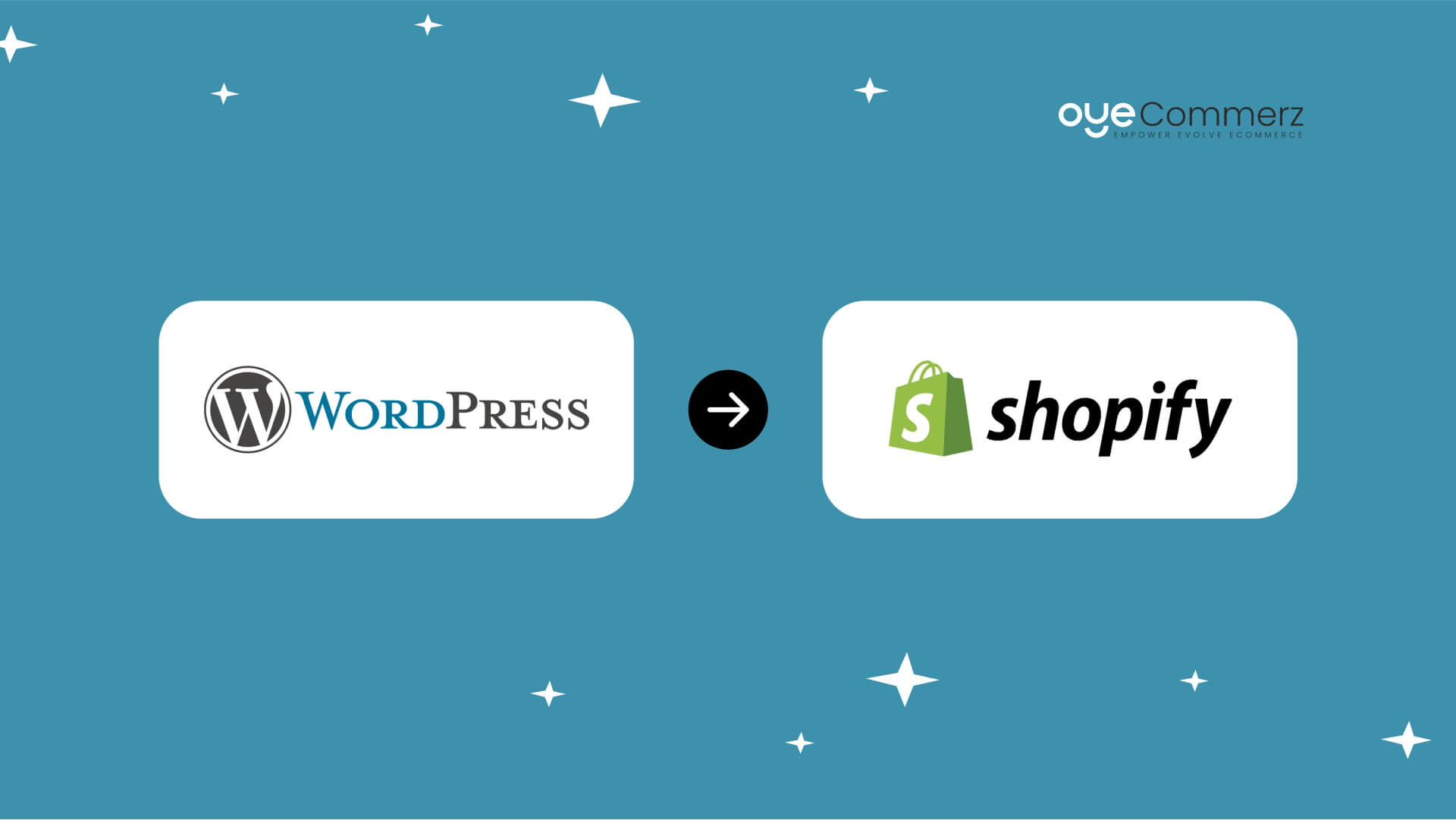Transitioning from WordPress to Shopify marks an exciting step toward streamlining your e-commerce processes. As businesses expand, selecting a platform that aligns with scalability, UX, and customization becomes crucial. Shopify has emerged as a preferred choice for online merchants, offering unmatched adaptability, security, and user-friendliness. In this guide, we will delve into the transformative impact of this migration, highlight the advantages, and share practical tips to ensure a smooth move.
1. Why Switch from WP to Shopify?
The combination of WordPress and WooCommerce, continues to support countless online stores. However, as businesses scale, issues like plugin dependency, data risks, and complex setups often obstruct growth. Shopify, specifically created for e-commerce, eliminates these issues with an all-in-one, user-friendly platform. Real data back this transition—Shopify hosts over 4.4 million websites globally, with a reported 10% increase in sales conversion rates for numerous merchants post-switch.
2. Shopify's Perks for Thriving Online Stores
Shopify’s robust ecosystem is tailored for scaling brands. Its standout features include:
- Effortless Design Flexibility: Shopify offers over 80 expertly crafted themes.
- Integrated Tools: Features like Shopify Payments and built-in SEO save time and effort.
- Global Reach: Currency versatility and regional customization enable brands to reach global markets.
Additionally, Shopify delivers an uptime rate of 99.98%, guaranteeing your store is always operational.
3. Getting Ready for Your WordPress-to-Shopify Transition
Prior to starting the migration process, evaluate your existing setup. Review inventory details, customer details, and SEO performance. Tools like Shopify’s Migration Kit or third-party solutions help ease the transition. Create a comprehensive plan, making sure all resources—item details, media files, and articles—are ready for seamless import.
4. The Importance of Accurate Data Migration
Transferring your data forms the foundation for a smooth transition. When migrating from WordPress to Shopify, prioritize:
- Product Information: SKU, item summaries, and groupings.
- Client Information: Emails, purchase records, and preferences.
- SEO Optimization: Retain meta tags, URLs, and forwarding paths to avoid SEO losses.
Leverage apps like LitExtension to streamline data transfer while minimizing errors.
5. Customizing Your Shopify Store
After the move, personalizing your Shopify store ensures it reflects your business identity. Take advantage of Shopify’s drag-and-drop editor to WooCommerce alternative Shopify design pages effortlessly. Shopify's templates are optimized for all devices, providing a seamless user experience across devices—a key point, given 74% of e-commerce traffic comes from mobile visitors.
6. How to Protect Your SEO Rankings When Switching Platforms
SEO is vital for preserving your online presence during migration. Shopify is highly optimized for search engines with organized link formatting, built-in optimization tools, and smooth content management. Ensure:
- Set up URL forwarding for old URLs.
- Enhance updated content with targeted phrases.
- Use Shopify's apps Plug in SEO to track analytics post-migration.
7. Essential Tests After Migrating to Shopify
After finishing the transfer, run detailed checks.
Review: - Page load times (Shopify delivers faster speeds compared to WP).
- Functionality of payment gateways and transaction flow.
- Adaptability across devices.
Testing guarantees your store delivers a seamless shopping experience from the start.
8. Case Study of a Successful Migration
One such migration success story is Gymshark, a sportswear company that transitioned to Shopify. Post-migration, the company saw a 60% boost in mobile sales and significantly lowered site downtime. This showcases the potential of Shopify in enhancing online business success.
9. Challenges and Solutions
Migration is not without obstacles, such as information accuracy and reconfiguring custom functionalities. However, Shopify’s robust support and external professionals simplify the process. Partnering with experienced Shopify developers ensures a smooth transition.
10. Starting Your Journey with Shopify
Migrating from WordPress to Shopify represents a forward-thinking approach to e-commerce. By addressing scalability, simplifying management, and improving buyer satisfaction, Shopify enables companies to succeed in challenging industries.
Final Thoughts
Transitioning from WP to Shopify offers a smart solution that can greatly enhance your online business performance. With a well-structured strategy, the appropriate resources, and professional guidance, you can achieve new growth opportunities.
Ready to make the leap? Shopify theme customization Reach out today to learn how our Shopify migration services can revolutionize your e-commerce platform. Get in touch today, or ask yourself: Is it time to seize Shopify’s advantages for your store?
